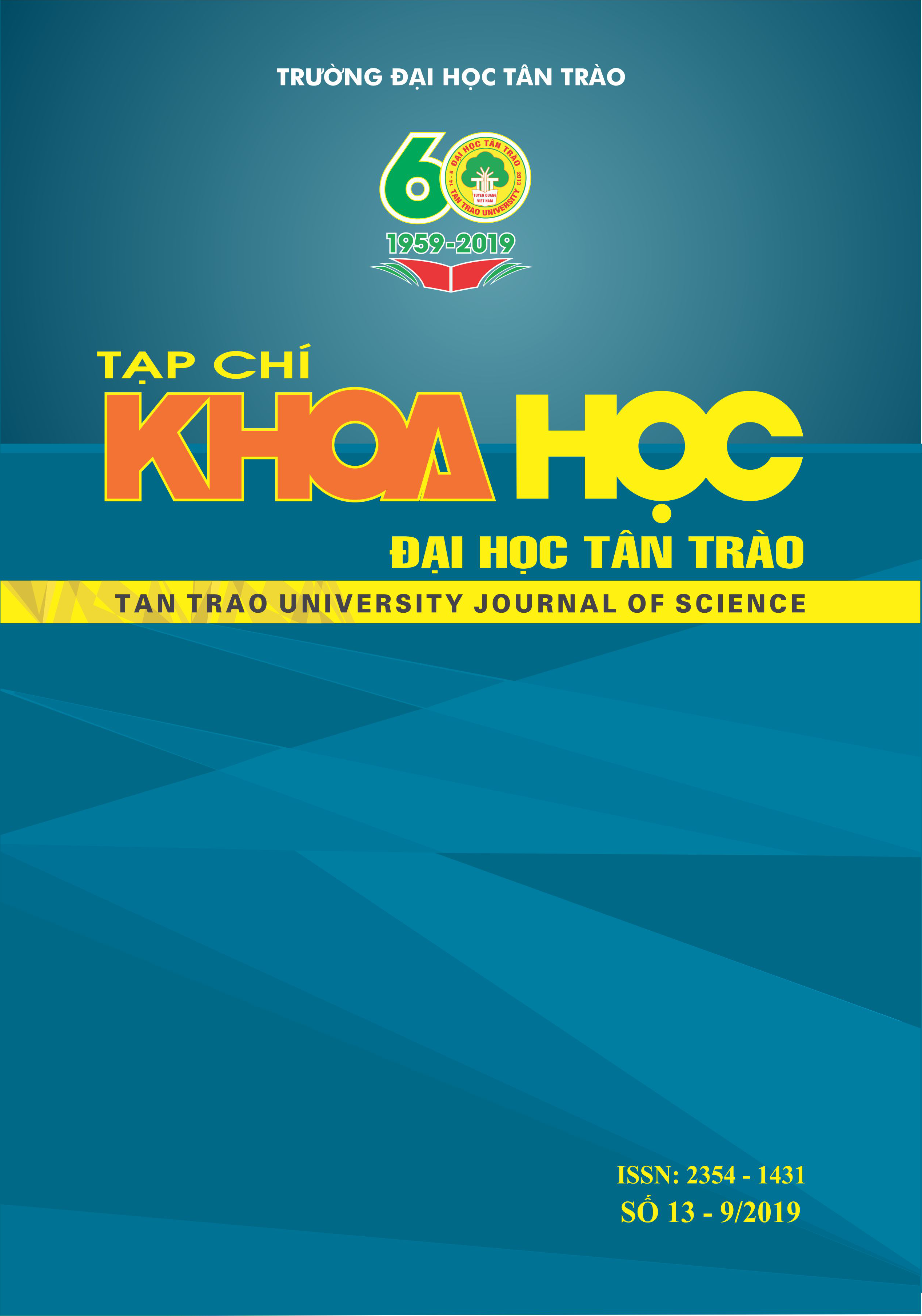Sustainable development of San Diu cultural ethnic in the northern mountainous region
DOI:
https://doi.org/10.51453/2354-1431/2019/310Keywords:
San Diu, sustainable development, northern mountainous region, culture, integrationAbstract
The Northern mountainous region of Vietnam currently has about 31 ethnic groups living. Due to intermingling in a cultural-historical area, the ethnic groups have economic, social, political, cultural communication ... After Innovation (1986), the integration of peoples happened strongly to promote the harmony, on the other hand, traditional culture changing is the reason to make many cultural values which are eroded. In the past few decades, the Party and the State have had guidelines, policies, campaigns and projects to preserve and promote the cultural identity of ethnic groups. In order to join together with the measures that have been taken, we conduct research in a specific ethnic group that is clearly influenced on the process of industrialization and modernization, thus, proposing suitable solutions for sustainable cultural development.
Downloads
References
1. Dự án VIE/01/021 “Hỗ trợ xây dựng và thực hiện chương trình nghị sự 21 quốc gia của Việt Nam”, Phát triển bền vững - Kỷ yếu Hội nghị toàn quốc lần thứ nhất, Bộ Kế hoạch và Đầu tư, Hà Nội, 2004.
2. Nguyễn Thị Quế Loan, "Phát triển bền vững ngôn ngữ các tộc người thiểu số ở tỉnh Thái Nguyên", Kỷ yếu Hội thảo quốc tế Nghiên cứu và giảng dạy ngôn ngữ, văn hóa Việt Nam- Trung Quốc ở Đông Á và Đông Nam Á, Nhà xuất bản Đại học Quốc gia Hà Nội, 2009, tr. 339-346.
3. Vương Xuân Tình, Trần Hồng Hạnh (Chủ biên), (2012), Phát triển bền vững văn hoá tộc người trong quá trình hội nhập ở vùng Đông Bắc, Nxb. Khoa học xã hội, Hà Nội.
4. Phạm Xuân Nam (Chủ biên) (2005), Triết lý phát triển ở Việt Nam - Mấy vấn đề cốt yếu, Nxb Khoa học xã hội, Hà Nội.
5. Ủy ban Dân tộc (2006), Phát triển bền vững vùng dân tộc thiểu số và miền núi Việt Nam, Nxb Văn hóa dân tộc, Hà Nội.
Downloads
Published
How to Cite
Issue
Section
License

This work is licensed under a Creative Commons Attribution-ShareAlike 4.0 International License.
All articles published in SJTTU are licensed under a Creative Commons Attribution-ShareAlike 4.0 International (CC BY-SA) license. This means anyone is free to copy, transform, or redistribute articles for any lawful purpose in any medium, provided they give appropriate attribution to the original author(s) and SJTTU, link to the license, indicate if changes were made, and redistribute any derivative work under the same license.
Copyright on articles is retained by the respective author(s), without restrictions. A non-exclusive license is granted to SJTTU to publish the article and identify itself as its original publisher, along with the commercial right to include the article in a hardcopy issue for sale to libraries and individuals.
Although the conditions of the CC BY-SA license don't apply to authors (as the copyright holder of your article, you have no restrictions on your rights), by submitting to SJTTU, authors recognize the rights of readers, and must grant any third party the right to use their article to the extent provided by the license.


